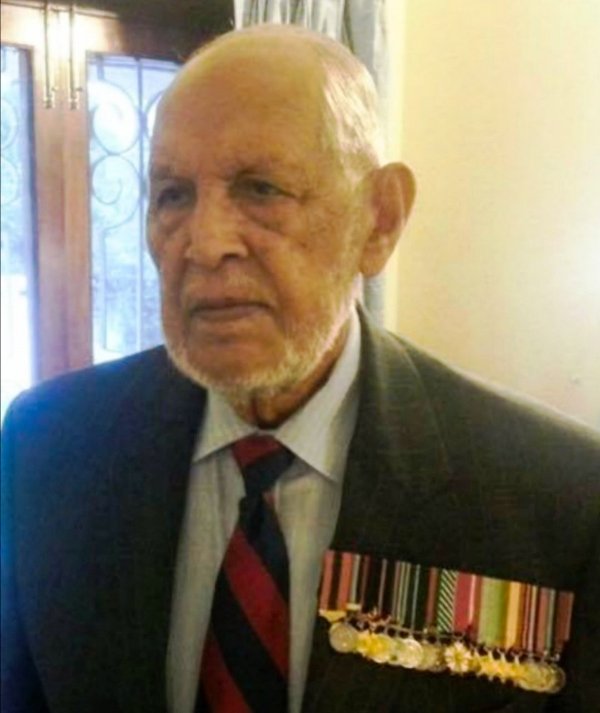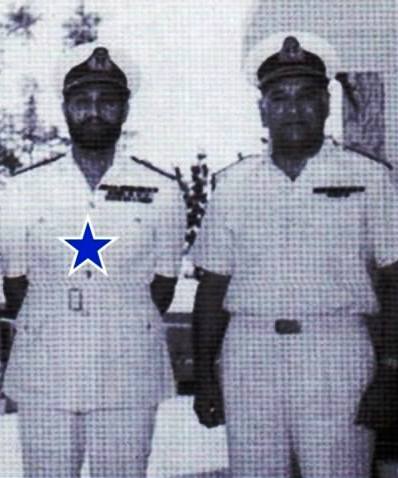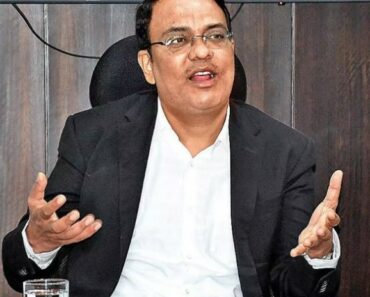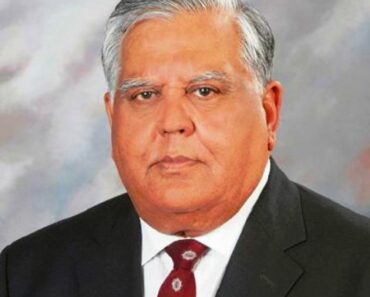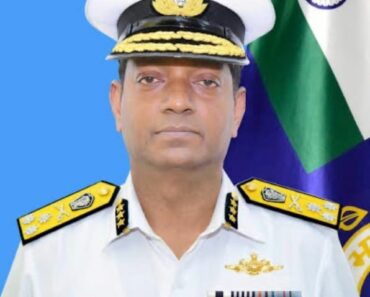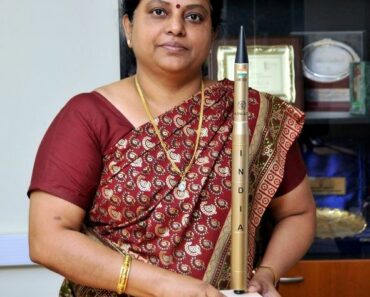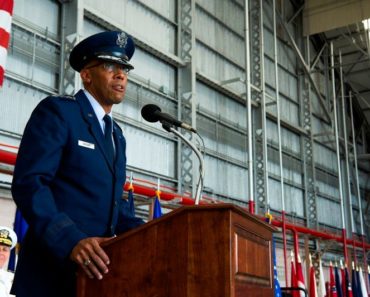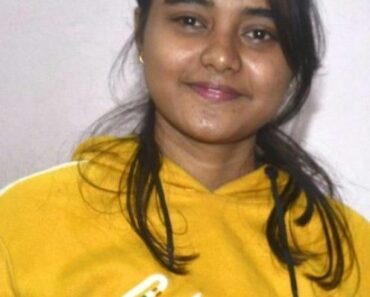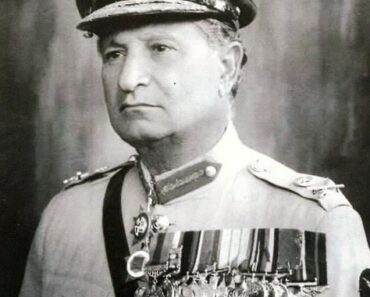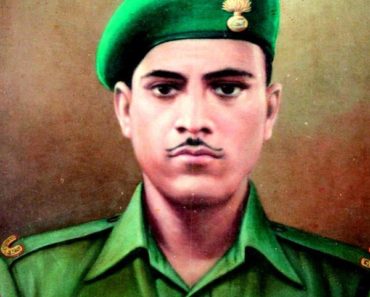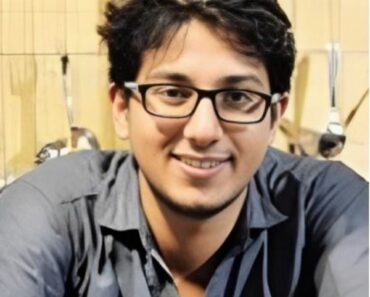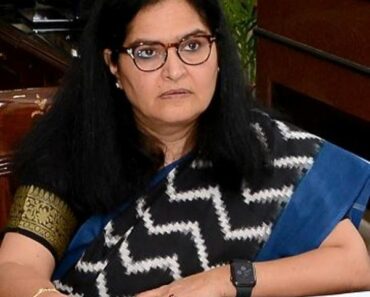Mohammad Shariff (1920 – 2020) was a Pakistani Navy Admiral, who served as the Flag Officer Commanding (FOC) of the Eastern Naval Command in East Pakistan (now Bangladesh). He died on 27 April 2020 in Islamabad due to an age-related illness.
Contents
Wiki/Biography
Mohammad Shariff was born on Thursday, 1 July 1920 (age 99 years; at the time of death) in Gujrat (a city in Pakistan), Punjab Province, British India (now in Punjab Province, Pakistan). After completing his schooling at Rashtriya Indian Military College (RIMC) in Dehradun, he enrolled in the Royal Indian Navy (RIN) in 1936. He earned a master’s degree in War Studies at the Naval War College in Newport, Rhode Island, US, in 1962. [1]Naval War College Review
Family
Mohammad Shariff belonged to a Punjabi-Kashmiri family. [2]Ilmi Encyclopaedia of General Knowledge by Ilmi Kitab Khana – Google Books
Parents & Siblings
Not much is known about his parents.
Wife & Children
His marital status at the time of death is unknown.
Religion
Mohammad Shariff followed Islam. [3]War in the Indian Ocean by Mihir K. Roy – Google Books
Career
Royal Indian Navy
Mohammad Shariff joined the Royal Indian Navy in 1936 as a Sailor in the Communications Branch. After the Second World War broke out in 1939, Shariff participated in several naval campaigns including the Battle of the Atlantic, the East African campaign, the South-East Asian theatre, and the Battle of the Mediterranean. During the war, he served as a Signalist in the navy. In 1945, after the end of the Second World War, Shariff applied for an officer’s commission into the navy and was later sent to Britannia Royal Naval College (BRNC) in England. In 1946, he was commissioned into the navy as a Sub Lieutenant with a degree in Staff Course. In the same year, he participated in the naval mutiny against the British government.
Pakistan Navy
Mohammad Shariff, who had become a Lieutenant, decided to join the Pakistan Navy after the partition of India in 1947. According to the list of seniority that the Royal Indian Navy gave to the Pakistani Ministry of Defence (MoD), Shariff was the 20th most senior Pakistan Navy officer. By 1953, Shariff had become a Lieutenant Commander and was posted to Karachi as a Senior Staff Officer at the Naval Headquarters. He served in Karachi till 1956. He became a Commander in 1960. In 1962, after returning to Pakistan from the US, where he earned a master’s degree in War Studies, Shariff became a Captain and was appointed as Deputy Chief of Naval Staff (Personnel).
1965 Indo-Pakistan War
When the war between India and Pakistan broke out in 1965, Shariff continued to serve as Deputy Chief of Naval Staff and helped the Pakistan Navy in planning several naval assaults on the Indian Navy.
Post-1965 war
Mohammad Shariff was posted as Deputy Chief of Naval Staff (DCNS) (Operations) after he received a promotion and became a Commodore in 1966. There, he served under Vice-Admiral Syed Mohammad Ahsan till 1969. Shariff led a delegation of senior Pakistani military officials to China, where he held defence talks with the senior People’s Liberation Army (PLA) leadership in 1968. Shariff became a Rear-Admiral in 1969 and was sent to East Pakistan, where he served as the Flag Officer Commanding (FOC) at the Eastern Naval Command Headquarters.
Bangladesh Liberation War
Under his leadership, the Pakistan Navy conducted aggressive war drills in the Bay of Bengal and acquired information related to the Indian Armed Forces deployed near East Pakistan. In 1971, after Pakistan initiated Operation Searchlight, which led to the death of more than 3 million Bengalis in East Pakistan, Shariff was sceptical of the operation’s success in curbing the rebellion. In his book, Admiral’s Diary: Battling Through Stormy Sea Life for Decades, Shariff wrote,
The initial military success (Searchlight and Barisal) in regaining the law and order situation in East-Pakistan in March 1971 was misunderstood as a complete success…. In actuality, the law and order situation deteriorated with time, particularly after September of the same year when the population turned increasingly against the [Pakistan] armed forces as well as the [Yahya’s military] government. The rapid increase in the number of troops though bloated the overall strength, however, [it] did not add to our fighting strength to the extent that was required. A sizeable proportion of the new additions were too old, inexperienced or unwilling….”
Later, under Operation Searchlight, Shariff launched Operation Barisal to take control of the town of Barisal from the Mukti Bahinis, a guerilla force that fought against the Pakistani military. The operation was a success but the gains made by Pakistan Navy were reversed later as India invaded East Pakistan on 3 December 1971 after the Pakistani Air Force bombed Indian airfields. The Pakistan Navy fought against the Indian Navy without support from the Naval Headquarters in Karachi. Reportedly, when Shariff requested the headquarters to send combat warships, his request was denied because of the fear of losing warships. Shariff initiated several operations in the Bay of Bengal against the Indian forces with the help of the Special Services Group (Navy) (SSGN) and Marines. According to Shariff, the Pakistan Navy aided the ground forces in conducting operations to the best of its ability during the war. His proficiency on the battlefield impressed the senior hierarchy in the Ministry of Defence. After the Indian Air Force defeated Pakistan Air Force in East Pakistan, Shariff, despite Air Commodore Inamul Haq’s objection, managed to persuade Lt Gen A. A. K. Niazi to evacuate the helicopters, pilots, and personnel of the Air Force and the Army Aviation Corps to Burma to prevent the Indian forces from capturing them. He also initiated an evacuation of the Pakistan Navy’s assets and personnel to Burma. Shariff, however, could not evacuate as the Indian Navy had blocked all the escape routes from East Pakistan. On 16 December 1971, Shariff surrendered the Eastern Naval Command to Vice-Admiral Nilakanta Krishnan, who was the Indian Navy’s Flag Officer Commanding-in-Chief (FOC-in-C) of the Eastern Naval Command, at 16.31 hours (4.31 PM). He was then taken to the Ramna Race Course in Dhaka, where Lt Gen A. A. K. Niazi surrendered more than 93,000 soldiers to Lt Gen Jagjit Singh Aurora, GOC Eastern Command of the Indian Army, and signed the instrument of surrender.
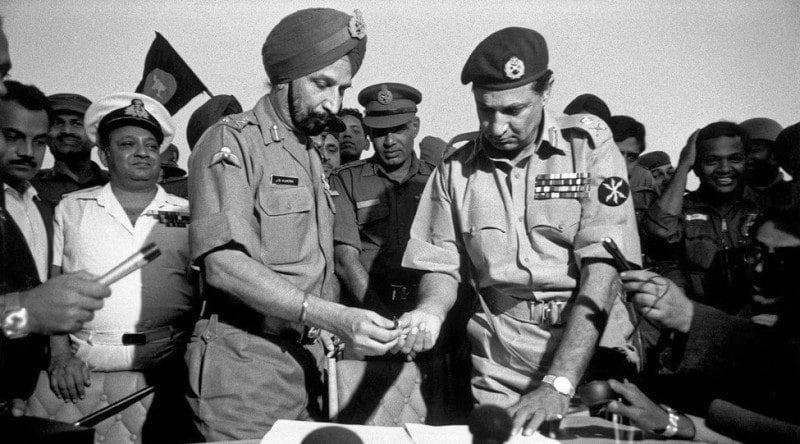
Lt Gen Jagjit Singh Aurora with Lt General AAK Niazi during the signing of the instrument of surrender at Dhaka
After surrender
After the war ended, Mohammad Shariff, along with A. A. K. Niazi, was transported to a Prisoner of War (POW) camp in India. He stayed at Camp No 77 with Niazi till 1972 and was later moved to another POW camp at Fort Williams, Kolkata. There, he met Admiral Elmo Zumwalt, the Chief of the US Navy and told him about the situation in East Pakistan during the war. In his book War in the Indian Ocean, Mihir K. Roy quoted Shariff and wrote,
[At the end of the conflict] … We [Eastern Naval Command] had no intelligence and hence, were both deaf and blind with the Indian Navy and Indian Air Force pounding us day and night.”
Return to Pakistan
In March 1973, Mohammad Shariff was repatriated to Pakistan, where he testified before the Hamoodur Rahman Commission (aka the War Enquiry Commission). In his testimony, he placed the blame for the defeat in East Pakistan on the 1958 coup that took place in Pakistan. In his testimony, Shariff said,
The foundation for the defeat in East Pakistan could be traced back to the military coup d’état in 1958 where senior officers became greedy self-serving politicians rather than soldiers.”
In 1974, he was appointed as Vice-Chief of Naval Staff (VCNS) after he received a promotion and became a Vice-Admiral. After Vice-Admiral Hasan Hafeez Ahmad died because of heart complications on 8 March 1975, Prime Minister Zulfikar Ali Bhutto appointed Shariff as the Chief of Naval Staff (CNS) of the Pakistan Navy on 23 March 1975. He became the first Pakistani to become an Admiral in the navy since the establishment of the Pakistan Navy in 1947. [4]The Express Tribune On 22 January 1977, due to the absence of General Muhammad Shariff from the office of the Chairman of the Joint Chiefs of Staff Committee (CJCSC), Admiral Shariff became the acting Chairman of the Joint Chiefs of Staff Committee. He then led a delegation of senior Pakistan military officials to meet Li Xiannian, the Vice Chairman of the Chinese Communist Party (CCP). After martial law was enforced to curb the protests after the 1977 elections in Pakistan, General Zia appointed Shariff as Deputy Chief Martial Law Administrator (CMLA) in the Military Council to aid President Ilahi in restoring law and order. In 1978, Admiral Shariff became a permanent CJCSC after General Muhammad Shariff resigned from his post due to disagreements between him and Zia. Following his appointment, Shariff became the first Pakistan Navy Admiral to be appointed to the post of CJCSC. Later, he suggested Admiral Karamat Rahman Niazi’s name for the post of Chief of Naval Staff (CNS).
Soviet Union’s invasion of Afghanistan
After the Soviet Union began its invasion of Afghanistan on 25 December 1979, General Zia, who had become the President of Pakistan, called for a meeting in which Mohammad Shariff also participated. In the meeting, Zia ordered Mohammad and Khalid Mahmud Arif, who was the COAS, to formulate a detailed plan to counter the USSR’s invasion of Afghanistan with a geo-strategic team that encompassed high-ranking officials from the civilian administration as well as the military. Later, Shariff advised Zia to help the Afghan Mujahideens against the USSR.
Post-retirement
Mohammad Shariff retired from the Pakistan Navy in 1980 and was later appointed as the Chairman of the Federal Public Service Commission (FPSC). He also served Zia as his military advisor. As the Chairman of FPSC, Shariff was often criticised for appointing civil servants as per the liking of President Zia. Reportedly, he did not give high-ranking appointments to the civil servants who disagreed with Zia’s policies. When President Zia died in 1988, Shariff resigned from the Chairmanship of FPSC.
Military Decorations
Pakistani Medals
- Mohammad Shariff received Pakistan Tamgha from the Government of Pakistan after the partition of India.
- Shariff received Tamgha-e-Jamhuria from the Pakistani government in 1956.
- After the 1965 war, Shariff was awarded Sitara-e-Harb by the Government of Pakistan.
- For participating in the 1965 Indo-Pakistan War, Shariff received Tamgha-e-Diffa from the Pakistani government.
- For leading the Eastern Naval Command during the 1971 Indo-Pakistan War, Shariff won Pakistan’s second-highest military award Hilal-e-Jurat, Sitara-e-Harb, Tamgha-e-Jang, and Tamgha-e-Diffa.
- Prime Minister Zulfiqar Ali Bhutto awarded Nishan-e-Imtiaz (Military) to Shariff after he returned to Pakistan from India in March 1973.
- In 1976, Shariff was given Tamgha-e-Sad Saala Jashan-e-Wiladat-e-Quaid-e-Azam by the Government of Pakistan.
- Shariff received Hijri Tamgha in 1979 from the Pakistani government.
The UK Medals
- For participating in the Second World War, Shariff received the 1939-1945 Star, Africa Star, Atlantic Star, War Medal 1939-1945, and India Service Medal 1939–1945.
- In 1953, Shariff was awarded the Queen Elizabeth II Coronation Medal.
American Medal
- The Government of the United States of America awarded Mohammad Shariff with The Legion of Merit (Degree of Commander).
Death
On 27 April 2020, Mohammad Shariff died in Islamabad due to age-related causes at the age of 99. He was buried with full military honours. [5]The Express Tribune
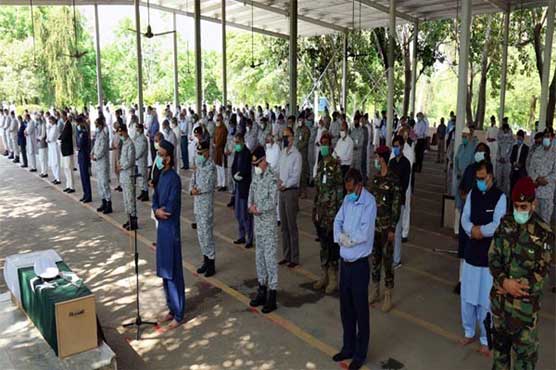
Civilians and Armed Forces personnel offering Ṣalāt al-Janāzah at Admiral Mohammad Shariff’s funeral
Facts/Trivia
- After Shariff surrendered the Eastern Naval Command of the Pakistan Navy to India, he handed over his TT-30 semi-automatic pistol to Vice-Admiral Nilakanta Krishnan. The pistol is showcased at the Indian Military Academy (IMA) in Dehradun in a covered glass.
- Mohammad Shariff often voiced his opinion in favour of making nuclear bombs in Pakistan to deter any aggression from India or the Soviet Union, which had invaded Afghanistan in 1979.
- After retiring from the navy, Mohammad Shariff became the President of the Elaf Club of Pakistan, an Islamabad-based political and military think tank.
- In 2010, Admiral Mohammad Shariff authored a book titled Admiral’s Diary: Battling Through Stormy Sea Life for Decades.

